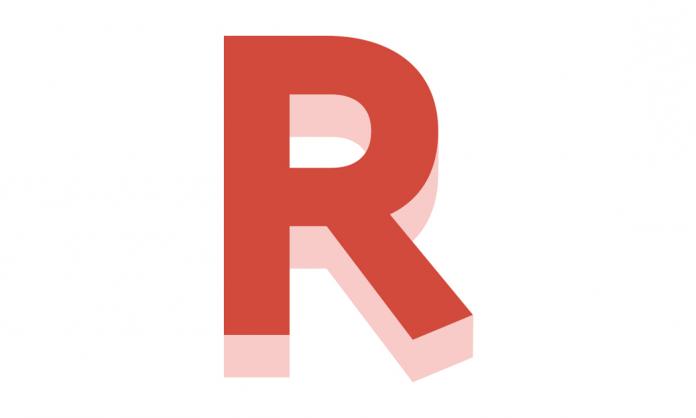Despite a frenzied media barrage by the Murdoch press against “Dictator Dan”, Labor had a decisive victory in the Victorian election. Murdoch’s Herald Sun flirted with the politics of the far-right, anti-vax, conspiracy theory nutjobs to attack Premier Daniel Andrews, and the Liberal Party was happy to follow along.
And it was not just the Murdoch press. The supposedly progressive Age and ABC also relentlessly attacked Labor, appealing to middle-class prejudices about “integrity” in government and emphasising hostility to Labor based on flimsy evidence. Any and every whingeing cafe and small business owner with a reactionary grievance was able to get a running. The teals and various right-wing independents were likewise heavily promoted, while left-wing challenges to the major parties, like the Victorian Socialists, were virtually ignored.
It is heartwarming for any left winger, indeed for anyone with a semblance of human decency, to see Murdoch and the rest of the media establishment getting one in the eye. It is a clear refutation of the common argument that the mass of workers are brainwashed by the capitalist media.
However, nobody should be under any illusion that Andrews heads some left-wing, pro-worker government. Despite a veneer of social progressiveness, this is a government that presided over the running down of the healthcare system and that is enforcing a 1.5 percent wage cap that is savaging the real wages of nurses, teachers and other public sector workers.
Labor’s raft of public-private partnerships has delivered huge profits to construction companies, property developers and Transurban. Labor has copied former Premier Jeff Kennett by continuing a wave of privatisations, including VicRoads, disability services, the ports and the Public Record Office, and has long been in bed with Crown Casino and the gambling industry.
Labor builds prisons rather than public housing, has refused to impose a freeze to hold down skyrocketing rents and has massively increased spending on the police. Even on COVID-19, Andrews eventually caved to the big-business push to open up with virtually no ongoing protection for vulnerable people.
Labor has failed to provide anything like adequate infrastructure for the fast-growing suburbs in Melbourne’s north and west. The long neglect of these working-class communities opened up space for far-right parties with their wild conspiracy theories and a cohort of right-wing independents and the Liberals to win significant swings against Labor in some seats at these elections.
The Greens have provided no serious left-wing opposition to Labor, the Liberals and the far right. They don’t try to build a militant base in the unions and working-class communities to fight to improve living standards. They have not championed the cause of healthcare workers working in intolerable conditions and enduring wage cuts.
The Greens don’t mobilise renters to fight for their rights. Even on social issues little climate change, they are not campaigning with the urgency needed to meet the threat.
Despite initial hype about a “Greenslide”, the Greens’ primary vote in the lower house is up only 0.2 percent to 10.9 percent. This is an underwhelming performance, especially coming on top of a mediocre result at the last state election.
While the Greens will gain some seats in the upper house, they have picked up only one new lower house seat—Richmond, where the popular former Labor MP Richard Wynne had retired. But even there, the Greens’ primary vote was up just 0.6 per cent, and they won only because of Victorian Socialist and Liberal Party preferences.
In Preston, Melbourne and Northcote, the Greens’ primary vote went down, in part because more radical voters backed the Victorian Socialists.
The liberal media’s favourites—the teals—failed to build on their federal election breakthrough and win state seats in part because Victoria’s donations laws prevented them from accessing the massive funding that wealthy capitalists like Simon Holmes à Court were able to provide to teals in the federal election. Nor did they have the hostility to Morrison to draw on. Nonetheless, they still got substantial votes in a number of traditional Liberal seats. The Liberals only just scraped across the line in Kew, Hawthorn and Mornington, and the teals remain a substantial threat to the party.
Narrowly holding off the teals in one-time super safe Liberal seats was one of the few consolation prizes in what was another terrible result for the Liberals. After a disastrous showing last election, the Liberals’ primary vote did not improve this time. Currently they are on 29.9 percent, down 0.5 per cent. They failed to regain any significant number of seats in the east and south-east, and, despite a major push in the west, failed to pick up seats there. And they have lost Glen Waverley, Ripon and possibly Hastings to Labor; all this despite a frantic campaign against the Andrews government by Murdoch and most of the rest of the media. The only thing that stopped this election being an absolute rout for the conservatives is that the Nationals did well, winning back three seats from rural independents.
Where the Liberals go from here is the big question. In the last state election, they ran a right-wing law and order and racist campaign targeting “African gangs”. This time they combined a grab bag of genuine reforms, such as $2 train fares and free school lunches, with attacks on Labor over the state debt, and joined the Murdoch and far-right chorus attacking “Dictator Dan”. The ranting pack at Sky News and their ilk are demanding that the Liberals shift further to the right. But this election, on top of the federal election results in Victoria, confirms that there is currently no mass audience for Trumpian-style politics here. The results are very uneven across Melbourne, and it is difficult to know at this stage exactly why people voted the way they did in specific seats. However, the fact that various Liberal candidates were far-right religious fundamentalists undoubtedly hurt the party.
Yet despite this, various initial challengers for the Liberal leadership declared they would overturn former leader Matthew Guy’s ban on Renee Heath, an activist from the ultra-conservative City Builders church, and admit her to the Liberal caucus. Even supposed Liberal moderate John Pesutto, the Age’s and ABC’s pinup boy for Liberal leadership, declared that Heath “deserves a chance”.
The far-right parties pitched this election as the most important election in Victorian history—a fight for “freedom” from Andrews’ vaccine mandates and lockdowns—and they failed. They genuinely believed their own fantasies that they had popular support and so are likely to be demoralised by their underwhelming showing.
Nonetheless, the far right can’t be simply written off. They gained some sizeable votes in the upper house and are set to win some seats there. Their total vote in the lower house was also up, with Family First doing best with 2.9 percent, followed by the Freedom Party on 1.7 percent. But they were hurt by the sheer number of far-right parties, including the United Australia Party, One Nation, Liberal Democrats, Democratic Labor Party, Angry Victorians, New Democrats and various far-right independents.
If at some point the far right managed to cohere as a united force with a Trump-style leader, they could become a dangerous factor in Australian politics that the left would need to combat actively, not just in elections but on the streets.
Despite all the media hype about the teals, various rural independents and the prospect of right-wing independents winning outer suburban Labor seats like Melton and Werribee, independents did not improve their overall vote and have not won any seats. Rural independents did particularly badly, losing three seats to the Nationals.
Labor held off the independent challenges in the west. In Melton, the vote for the main independent candidate, who was preferencing the Liberals, went down 3.6 percent, and in Werribee the Labor primary vote was down only 0.5 percent, and there was actually a swing to Labor of 0.9 percent after preferences.
The lower house vote for independents is currently down 0.2 percent on the last election to 5.8 percent, despite there being more independent candidates this time and a lot more media backing for them. Notably, the media gave nothing like the same coverage to more left-wing independents like Gaetano Greco, who came close to defeating Labor in Preston, a historically very safe Labor seat.
Similarly, the Victorian Socialists increased its vote in every seat it stood and regularly outpolled far-right candidates, despite attracting little media attention. Its best votes included 9.8 percent in Footscray, 8.4 percent in Broadmeadows, 8.3 percent in Thomastown and 8.2 percent Brunswick. In Pascoe Vale, the combined socialist vote was 9.8 percent, with Madaleine Hah from VS on 5.3 percent and Sue Bolton from Socialist Alliance on 4.5 percent.
Given the scale of the “Dan slide” last election, Labor will be happy about suffering only a 3.4 percent overall two-party-preferred swing. Labor also did well in the eastern suburbs, picking up Glen Waverley and gaining two-party-preferred swings in a number of seats including Ringwood, Bayswater, Box Hill and Glen Waverley.
This seems in part to reflect demographic shifts, with more workers, renters and younger people moving into these areas, most of whom are not particularly open to far-right rhetoric. As well, it appears that the Chinese vote strongly favoured Labor in Box Hill, Glen Waverley and some other areas.
Labor held its marginal sand-belt seats in the south-east that benefited from the level crossing removals and which will gain from the new suburban rail loop that the Liberals campaigned against. Labor’s vote also held up in the major regional towns of Bendigo and Ballarat, and it got swings towards it in Geelong and South Barwon.
Nonetheless, Labor’s overall primary vote took a significant hit, down 5.7 percent to 37.1 percent due in large part to large swings against it in a number of previously very safe seats in the west (St Albans 16.3 percent, Sydenham 17.5 percent), north (Greenvale 18.2 percent, Thomastown 9.2 percent) and north-east (Mill Park 12.6 percent, Yan Yean 13.6 percent).
This in part reflects Labor’s long-term neglect of basic facilities—schools, hospitals, child care and public transport—in these areas, and failure to promise any. The Liberals, who previously paid little attention to these suburbs, deliberately targeted them, as did the far right.
However, we should not axiomatically assume, as most media commentators have, that it is overwhelmingly workers who voted for the far right in these areas. More serious study needs to be done. There is a significant layer of small business owners and other petty bourgeois types in all these suburbs that the right could appeal to. The right-wing candidates and activists were drawn precisely from these social layers.
Moreover, it was not just the right that made ground in the north and the west. The Victorian Socialists gained impressive votes in most of these areas, including 8.4 percent in Broadmeadows, 8.3 percent in Thomastown, 7.2 percent in Greenvale and 6.8 percent in St Albans.
It is vital for the left to build on this performance. We urgently need a fighting socialist alternative that can challenge the right and their capitalist backers, not just electorally but in workplaces, on the streets and on university campuses.
A militant socialist movement is needed to lead the fight to defend workers’ living standards, which are under sustained attack, and which combines that fight with campaigning around all the vital social issues, whether climate change, Indigenous rights or women’s liberation—a movement that fights for all the exploited and oppressed.
We can’t rely on either Labor or the Greens. Despite its pro-worker and socially progressive facade in Victoria, Labor consistently rules for the big end of town when in government. The Greens are unable seriously to challenge Labor because they too refuse to break with capitalism.
The impressive vote for Victorian Socialists shows there is an audience for a fighting socialist alternative. We need to build on it.









